Russia

Kazan Federal University
Kazan Federal University is a public research university located in Kazan, Russia.
Kazan Federal University

Kazan Federal Medical University (KFU), established in 1804, is one of Russia's oldest and most prestigious universities, offering top-tier medical education and a rich cultural experience in Kazan.
History and Recognition
- Founded: 1804, making it the second oldest university in Russia.
- Accreditation: Recognized by WHO and NMC India, with global degree validity.
Academic Programs
- MBBS: 6-year program in English & Russian.
- Dentistry: 5-year program with theoretical & clinical focus.
- Pharmacy: 5-year program in Russian, focusing on pharmaceutical sciences.
Admission Criteria
- Eligibility: Min. 50% in PCB in 12th grade + NEET qualification (for Indian students).
- Documents: Academic transcripts, passport, NEET scorecard, medical certificate.
Fees Structure
- Tuition: Approx. RUB 540,000/year (~$6,000).
- Hostel: Around RUB 14,000/year.
Campus Life and Facilities
- Support: Vibrant student life, sports, cultural activities, international support.
- Hostel: Well-furnished hostels with essential amenities.
- City Life: Located in historic Kazan with rich cultural heritage.
Why Choose Kazan Federal Medical University?
KFU stands out for academic excellence, modern infrastructure, global partnerships, and an inclusive environment for international students. It is an ideal destination for those seeking quality medical education abroad.
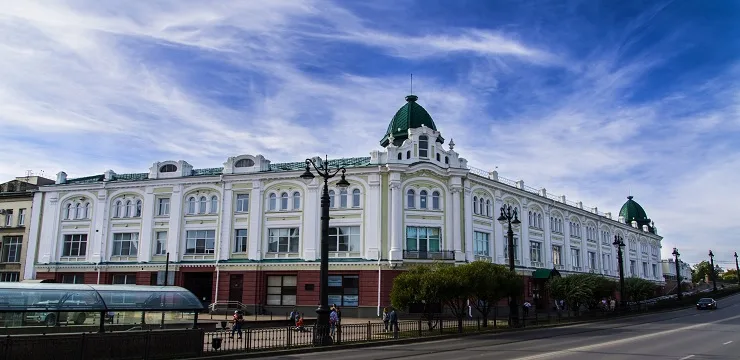
Omsk State Medical University
There are more than 40,000 OSMU graduates in Russia and abroad, and there are more than 5,500 students studying in five faculties: medicine, pediatrics, preventive medicine, stomatology and pharmaceutics.
Omsk State Medical University

Omsk State Medical University, founded in 1920, is a reputable medical institution in Omsk, Russia, offering a range of medical programs, including MBBS, with an English-medium curriculum for international students.
Institution Details
- Established: 1920
- Location: Omsk, Siberia, Russia
- Type: Public
- Recognition: Approved by MCI (India), WHO, and Russian Ministry of Health
Academic Programs
Omsk State Medical University offers various undergraduate and postgraduate programs:
- Faculty of General Medicine
- Faculty of Pediatrics
- Faculty of Dentistry (Stomatology)
- Faculty of Preventive Medicine
- Faculty of Pharmacy
- Duration: MBBS is typically 6 years, including clinical rotations
Admission Requirements
- Eligibility: 12th with 50% marks in PCB (Physics, Chemistry, Biology)
- NEET: Mandatory for Indian students
- Minimum Age: 17 years by admission year-end
- Application: Submit form with documents – academic records, NEET scorecard, etc.
Tuition Fees
- Tuition: ~$3,363 per year (approx. ₹2,88,890)
- Hostel: ~$488/year
- Total: Around $3,851 per year
Campus Life and Facilities
- Student Support: Specialized services for international students
- Accommodation: Dormitories with modern facilities
- Extracurricular: Sports, cultural events, community engagement
Research and Collaboration
The university has strong ties with global institutions and promotes hands-on medical research and innovation.
Contact & Ranking
- Official Website: Omsk State Medical University
- Ranking: 146th in Russia, ~5574th globally
Studying at Omsk State Medical University offers international students a unique opportunity for high-quality medical education in a culturally rich and academically focused environment.
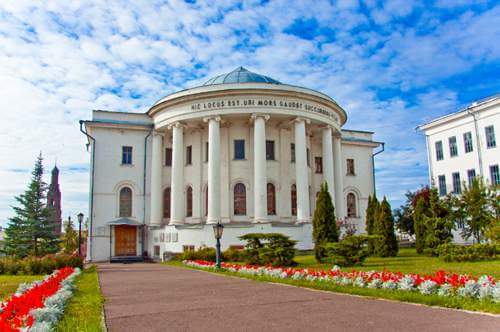
kazan state medical university
Kazan Medical University is a multifunctional multilevel state higher medical educational institution that meets the needs of society and the individual in higher medical education, the development of life sciences, and scientific medical knowledge.
Kazan State Medical University

Kazan State Medical University (KSMU), founded in 1814, is one of the oldest and most prestigious medical institutions in Russia, offering high-quality education to students from over 57 countries.
General Information
- Established: 1814
- Location: Kazan, Republic of Tatarstan, Russia
- Type: Public University
- Accreditations: Recognized by WHO, NMC, and other international bodies
Academic Programs
- MBBS (Bachelor of Medicine, Bachelor of Surgery) – 6 years
- Pediatrics
- Dentistry
- Pharmacy
- Postgraduate specializations in various medical fields
All programs are offered in both English and Russian languages for better international accessibility.
Admission Process
Eligibility Criteria:
- Minimum 50% in Physics, Chemistry, and Biology (12th standard)
- NEET qualification required for Indian students
- Minimum age: 17 years at the time of admission
Application Steps:
- Submit the online application form from the official website
- Upload documents: academic certificates, passport, NEET scorecard, medical certificate
- Receive admission letter (essential for visa application)
Fees and Scholarships
- Tuition Fee: ~475,000 RUB/year (~$6,500)
- Total (6 years incl. hostel): ~28,560 USD
- Scholarships: Available for international students
Campus Life
- Hostel Facilities: Multiple hostels with all basic amenities
- Activities: Cultural programs, sports, clubs, and student communities
Rankings and Recognition
- KSMU is consistently ranked among the top medical universities in Russia
- Internationally reputed for its research and academic excellence
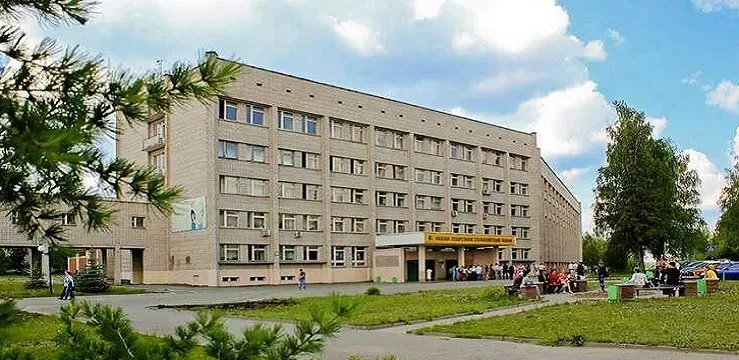
Izhevsk State Medical Academy
The Izhevsk State Medical Academy (ISMA; Russian: Ижевская государственная медицинская академия, ИГМА) is a public higher medical school in Izhevsk, Russia. The academy is an institution of Russia in medicine and training specialists in preventive and clinical medicine.[1]
Izhevsk State Medical Academy

Izhevsk State Medical Academy (ISMA), established in 1933, is a prestigious public medical institution in Izhevsk, Udmurt Republic, Russia. It is renowned for its academic excellence, modern infrastructure, and global student community.
General Information
- Established: 1933
- Location: Izhevsk, Udmurt Republic, Russia
- Type: Public Medical Academy
- Current Students: Around 4,000
Academic Offerings
- MBBS (Bachelor of Medicine, Bachelor of Surgery)
- Pediatrics
- Dentistry
- Nursing
- Postgraduate Specializations
- Language of Instruction: English and Russian
- Departments: 52 departments and 28 clinical training bases
Admission Criteria
- Minimum 50% marks in Physics, Chemistry, and Biology (12th grade)
- NEET qualification is mandatory for Indian students
- Online application submission with academic documents
- Admission letter is required for student visa processing
Facilities & Student Life
- Modern labs, libraries, and teaching resources
- On-campus hostels with all essential amenities
- Sports and recreational facilities
- Affordable living cost: $250–$400/month (including food and accommodation)
International Collaboration
- Training international students since 1988
- Over 113 countries represented
- Active in student exchange programs with foreign universities
Recognition
- Recognized by the World Health Organization (WHO)
- Recognized by the National Medical Commission (NMC) of India
Conclusion
Izhevsk State Medical Academy provides quality medical education in a culturally rich and affordable environment. Its international exposure, academic rigor, and focus on practical training make it a popular destination for students worldwide.
Kyrgyzstan
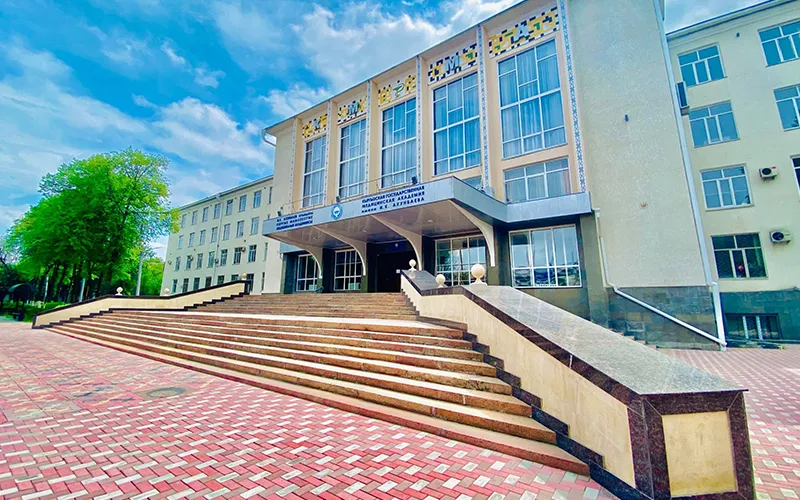
Kyrgyz State Medical Academy
The Kyrgyz State Medical Academy (KSMA), known officially as the Kyrgyz State Medical Academy named after I.K. Akhunbaev is a medical school in Kyrgyzstan, located in Bishkek.
Kyrgyz State Medical Academy

The Military Faculty of Kyrgyz State Medical Academy was created in the beginning of the Second World War, specifically in October 1941 when there was a shortage of medical personnel in the medical service. Originally it was the Sanitary Department of Defence, and in 1942 it was renamed to the Department of Military and Health Training, and has since 1944 been known as the Department of Military Medical Training. It is currently part of the Armed Forces of the Kyrgyz Republic and engages in the military training of students of medical, pediatric, dental, sanitary and pharmaceutical departments of the armed forces.
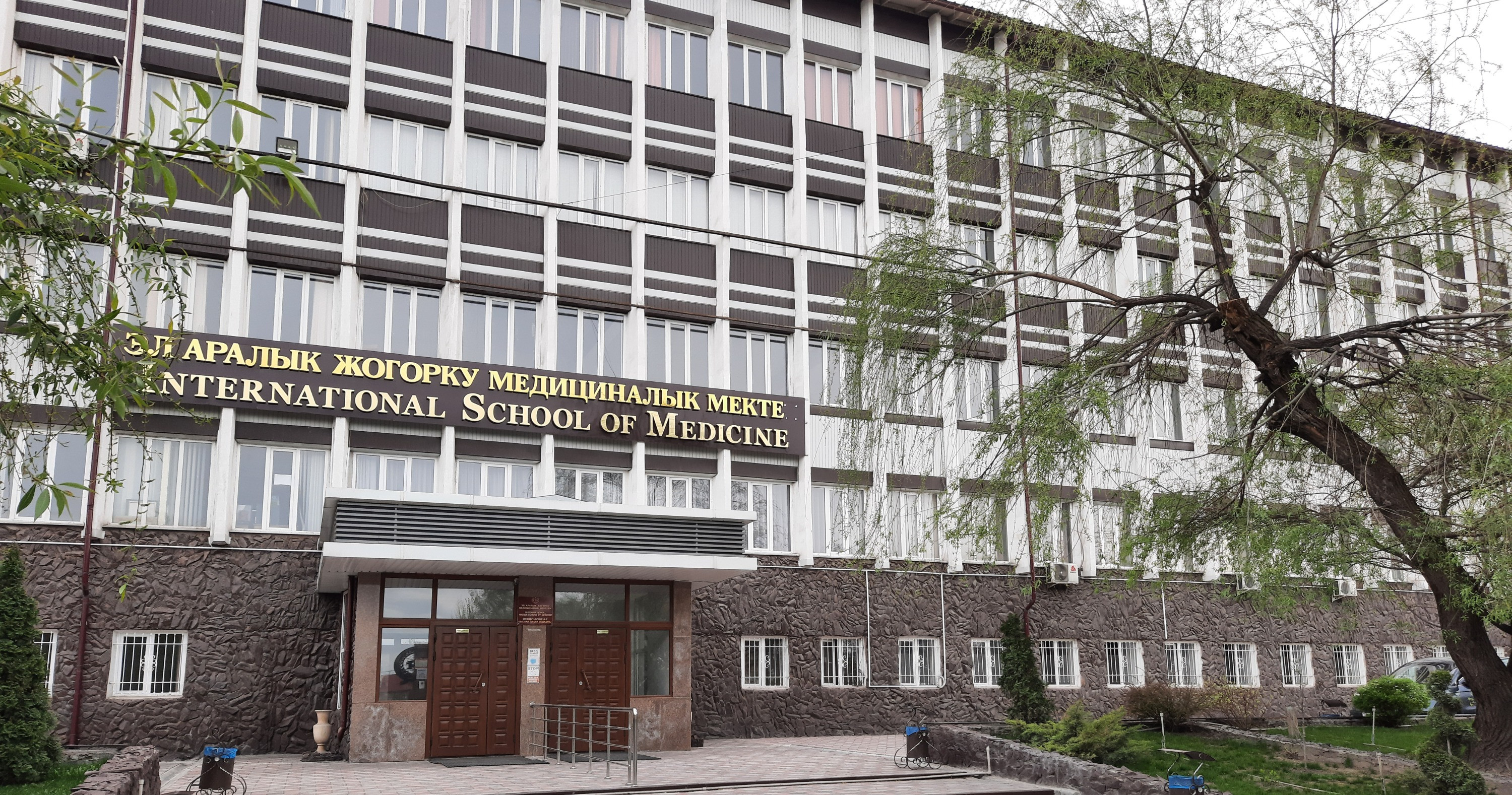
International Higher School of Medicine
The International Higher School of Medicine (IHSM) is a Medical University MBBS in Kyrgyzstan, Central Asia, recognized by international medical education organizations.
International Higher School of Medicine

The International Higher School of Medicine (IHSM) is a Medical University MBBS in Kyrgyzstan, Central Asia, recognized by international medical education organizations. The IHSM was established in 2003 as part of a strategy to reform the education system and increase the competitiveness of domestic universities.
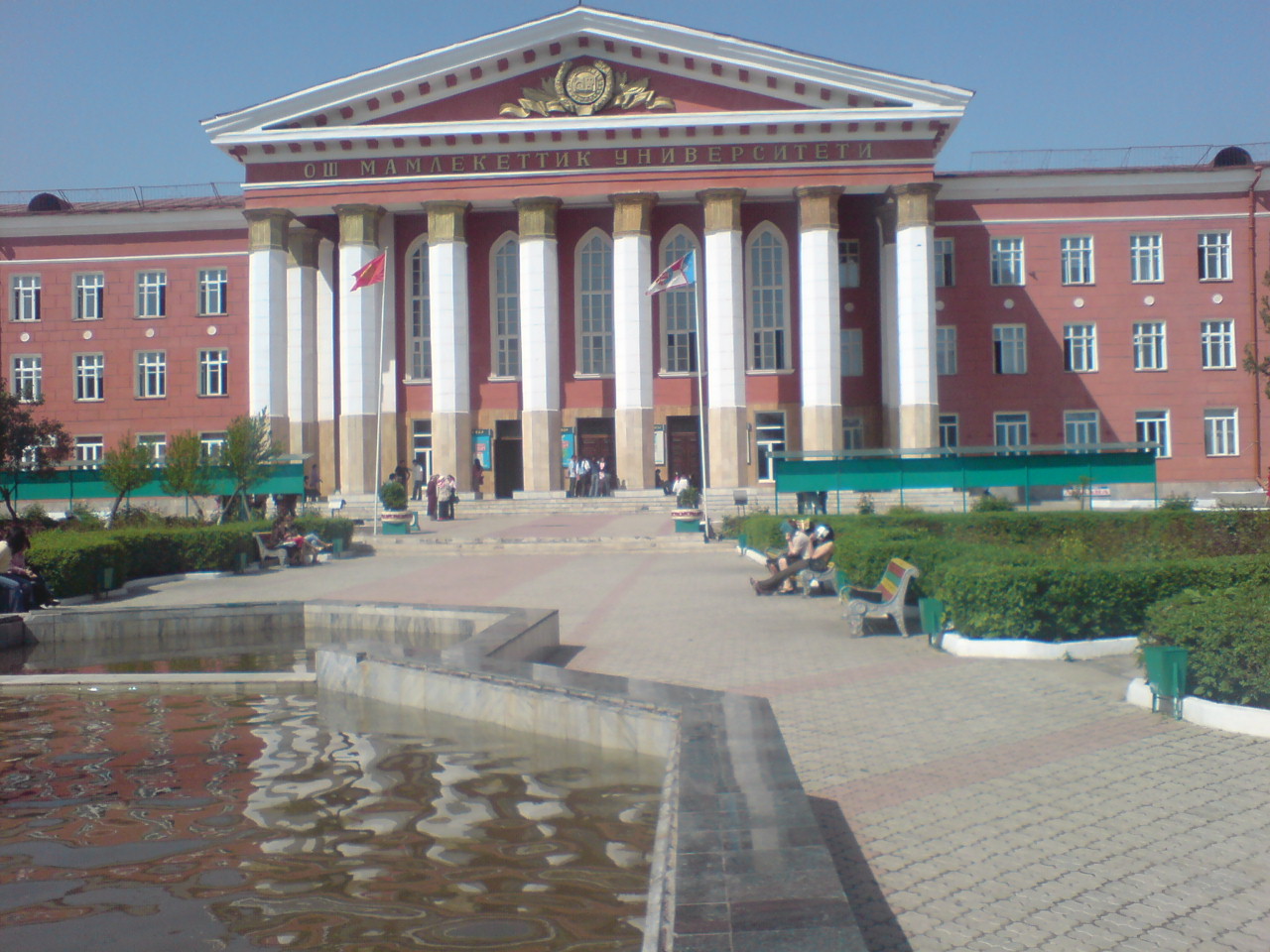
Medical Institute, Osh State University
The Osh State University is a public university in Osh, the second largest city in Kyrgyzstan.
Medical Institute, Osh State University

The Osh State University is a public university in Osh, the second largest city in Kyrgyzstan. The university was originally established by the Kirghiz SSR in 1939 as a teacher training institute and was upgraded to a comprehensive pedagogical institute in 1951. The institute was awarded full university status in 1992 in the immediate aftermath of the dissolution of the Soviet Union.
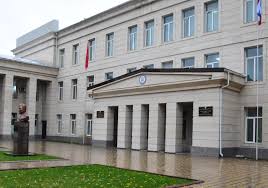
Jalalabad State University
Jalal-Abad State University named after Bekmamat Osmonov was founded on April 2, 1993, in the city of Jalal-Abad, Kyrgyzstan on the basis of already functioning educational institutions.
Jalalabad State University

Approximately 10,000 students study at JASU. There are more than 700 teachers, including 100 doctors of science and professors, 216 candidates of science and docents. Approximately 3000 students from countries such as India, Iran, Israel, Kazakhstan, Nepal, Pakistan, Palestine, Syria, Turkey, Turkmenistan, the United States and Uzbekistan also study at the university. The university produces specialists with high quality education in 54 fields and a secondary professional education in 12 fields. The medical faculty of Jalal-Abad State University which is named after B.Osmonov is affiliated with the Ministry of Health and Science Education
Kazakhstan

Kazakh National Medical University
Kazakh National Medical University is a university in Almaty, Kazakhstan. It was established in 1931, and the first rector was S.D. Asfendiyarov. In 2001, the government classified it as a "national" university.
Kazakh National Medical University

Kazakh National Medical University is a university in Almaty, Kazakhstan. It was established in 1931, and the first rector was S.D. Asfendiyarov. In 2001, the government classified it as a "national" university. The university has a student population of 11,000 students and PhD students study at KazNMU, and 1500 faculty members.[2]

Astana Medical University
Astana Medical University is a higher educational medical institution in the city of Astana, founded by an order of the Council of Ministers of the Kazakh SSR dated October 26, 1964. Initially
Astana Medical University

The resolution on the opening of the institute was adopted on October 26, 1964, by the Council of Ministers of the Kazakh SSR. Candidate of Medical Sciences A.R. Rakhishev was appointed as the organizer and coordinator of the future institute. Starting from October 1964, teachers from Almaty arrived to teach at the Central State Medical Institute, among them candidates of medical sciences Stanislav Dmitrievich Poletaev and P. A. Pak, as well as candidate of sciences and head of the department of biology R. N. Gagarina. By November 5, the institute had 15 teachers and departments of biology, Latin, normal anatomy, and foreign languages. Somewhat later, departments of chemistry and physics were organized. Classes at the institute began on December 12, 1964.

Semey State Medical University
Semey , formerly known as Semipalatinsk until 2007 and as Alash-Qala from 1917 to 1920, is a city in eastern Kazakhstan, in the Kazakh part of Siberia
Semey State Medical University

The first Russian settlement in the area dates from 1718, when Russia built a fort beside the river Irtysh, near the ruins of an ancient Buddhist monastery, where seven buildings could be seen. The fort (and later the city) was named Semipalatinsk (Russian for "Seven-Chambered City") after the monastery. The fort suffered frequent flooding caused by snowmelt swelling the Irtysh. In 1778 the fort was relocated 18 kilometres (11 mi) upstream to less flood-prone ground.[citation needed] A small city developed around the fort, and largely served the river trade between the nomadic peoples of Central Asia and the growing Russian Empire. The construction of the Turkestan-Siberia Railway in the early 20th century added to the city's importance, making it a major point of transit between Central Asia and Siberia. On 19 May 1854, Semipalatinsk was designated as the capital of the Semipalatinsk Oblast within the Russian Empire.

Karaganda State Medical University
Karaganda State Medical University - established in 1950, is the leading medical university of Kazakhstan in training of qualified personnel for healthcare system.
Karaganda State Medical University

Karaganda State Medical University - established in 1950, is the leading medical university of Kazakhstan in training of qualified personnel for healthcare system.[1] Currently, the University implements the multi-level training of specialists: bachelor program, postgraduate (master's course, residency, PhD program) and additional education. Training is provided in Kazakh, Russian and English languages. Over 8 thousand students study at the University.
Nepal
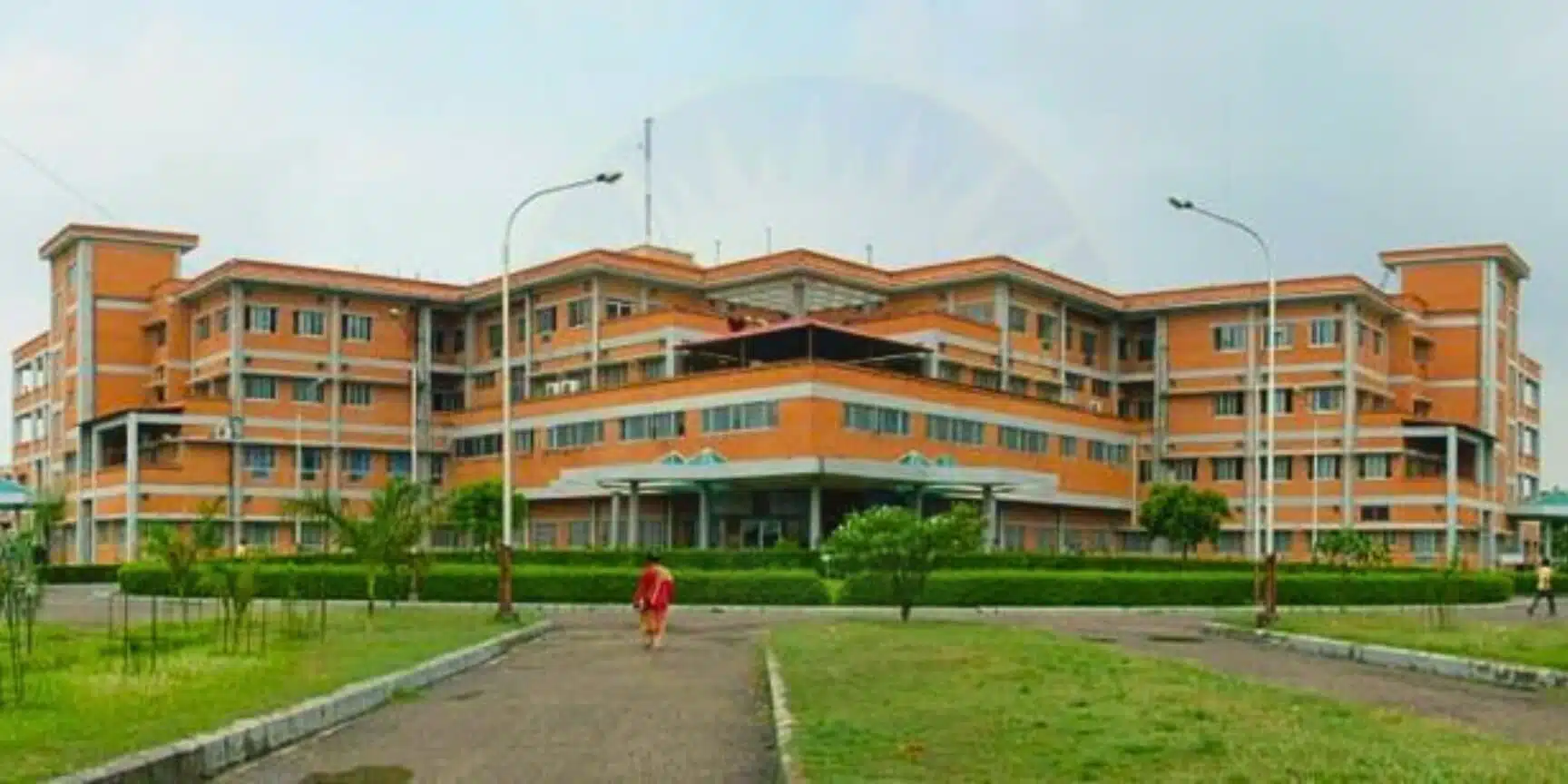
Kathmandu Medical College
Kathmandu University School of Medical Sciences (KUSMS)[1] is one of the nine schools of Kathmandu University running medical, nursing and allied health science program.
Kathmandu Medical College

Kathmandu University School of Medical Sciences (KUSMS)[1] is one of the nine schools of Kathmandu University running medical, nursing and allied health science program. KUSMS is a collaborative program of Kathmandu University and Dhulikhel Hospital. The main office of KUSMS is on the premises of Dhulikhel Hospital, a Kathmandu University hospital, in Kavrepalanchok District, Nepal. KUSMS was set up in 1994.[2] Manipal College of Medical Sciences in Pokhara was the first medical college to be granted affiliation. Since then, KUSMS has granted affiliation to several medical colleges around the country. KUSMS formally started its own medical training program, the MBBS program, on 7 September 2001 in association with Dhulikhel Hospital. The first class was 43 Nepali students. The day is annually celebrated as KUSMS Day. Although the medical school is still widely known as KUMS, inside and outside the country, its name was changed to Kathmandu University School of Medical Sciences (KUSMS) in 2006, as it not only trains medical undergraduates and postgraduates, but also runs nursing and allied health science programs.
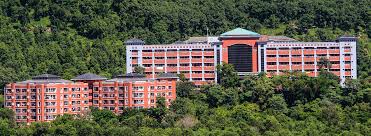
Manipal College of Medical Sciences
Manipal College of Medical Sciences (MCOMS) is a private medical college at Pokhara, Nepal. It is associated with Manipal Teaching Hospital, and enrols about 100 students each year for the MBBS medical qualification.
Manipal College of Medical Sciences

Manipal College of Medical Sciences (MCOMS) is a private medical college at Pokhara, Nepal. It is associated with Manipal Teaching Hospital, and enrols about 100 students each year for the MBBS medical qualification. The annual enrolment for the MBBS degree is 100 students (data from 2019). The majority of the students are of Nepalese and Indian origin. Students from other nations such as: Sri Lanka, Maldives, United States of America (NRN), Canada (NRN), etc. are also enrolled. Many elective students visit from American and European Universities and have the opportunity for hands on training.
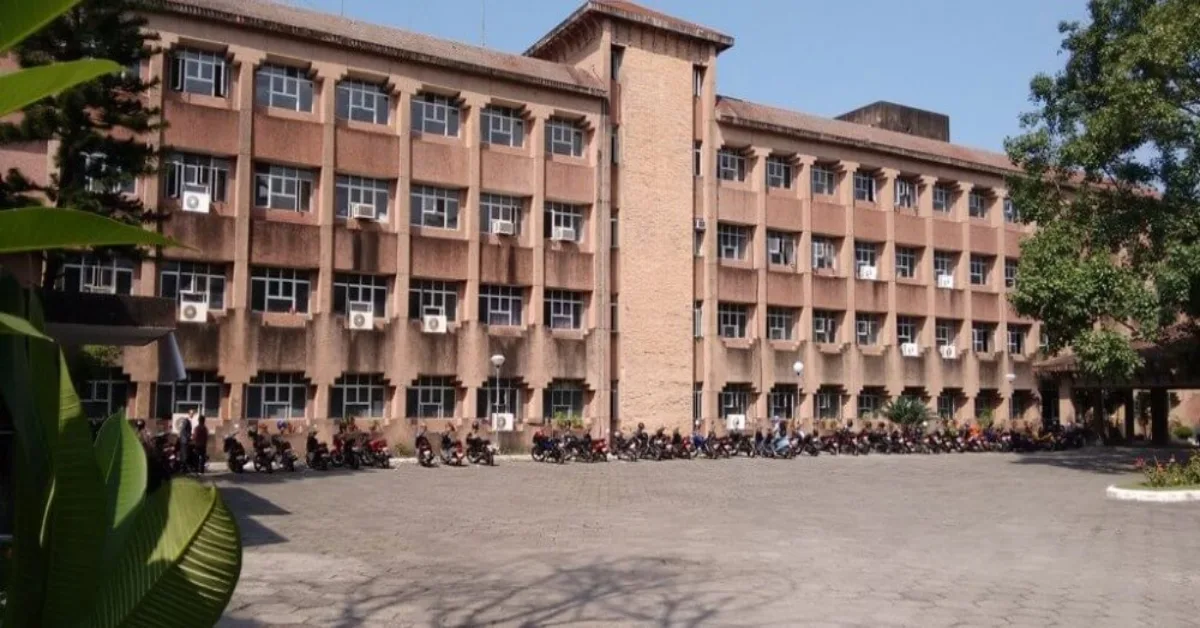
B.P. Koirala Institute of Health Sciences
B.P. Koirala Institute of Health Sciences (BPKIHS) (Nepali: वी.पी. कोइराला स्वास्थ्य विज्ञान प्रतिष्ठान) popularly known as Ghopa Camp,[1] is a Nepalese autonomous health sciences university.
B.P. Koirala Institute of Health Sciences

B.P. Koirala Institute of Health Sciences (BPKIHS) (Nepali: वी.पी. कोइराला स्वास्थ्य विज्ञान प्रतिष्ठान) popularly known as Ghopa Camp,[1] is a Nepalese autonomous health sciences university. It is located in the sub-metropolitan city of Dharan in Sunsari District. The Institute is a Nepal-India cooperation. The Institute serves the health education needs of the eastern region of Nepal at primary, secondary and tertiary levels.[citation needed] The Institute comprises four colleges: the Faculty of Medicine, the College of Dental Surgery, the College of Nursing, and the School of Public Health and Community Medicine.[2] The Institute also operates a 700-bed Teaching Hospital, offering postgraduate, undergraduate and university certificate programs. The Institute grants Bachelor's, Master's, Doctoral degrees like Doctorate of Medicine (DM), and several other certificates.[3] The MBBS program began on March 10, 1994, while the postgraduate programs began in 1999.[4]
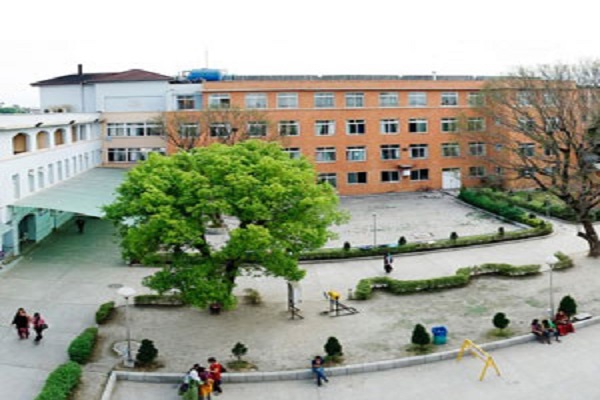
Patan Academy of Health Sciences (PAHS):
Patan Academy of Health Sciences (PAHS) (Nepali: पाटन स्वास्थ्य विज्ञान प्रतिष्ठान) is an autonomous, not-for-profit, public institution of higher education established in 2008 with the charter granted by the Parliament of Nepal.
Patan Academy of Health Sciences (PAHS):

Patan Academy of Health Sciences (PAHS) (Nepali: पाटन स्वास्थ्य विज्ञान प्रतिष्ठान) is an autonomous, not-for-profit, public institution of higher education established in 2008 with the charter granted by the Parliament of Nepal.[1] The stated aim of the PAHS is to work in close partnership with the national health system to improve the health care services in the remote/rural areas primarily through producing technically competent and socially responsible health care workers. Currently PAHS has been running School of Medicine and School of Nursing and Midwifery.[2] In the year 2017, PAHS started in Maters Program in Public Health (MPH) under School of Public Health (SoPH).[2] In future, it aims to run School of Allied Health Sciences.[2] PAHS MBBS curriculum focuses on holistic care of individual and community. PAHS preferentially enrolls students from rural areas and trains them in curriculum that emphasizes on community health and is subsequently provides support for its graduates who work in the rural areas.[3]
